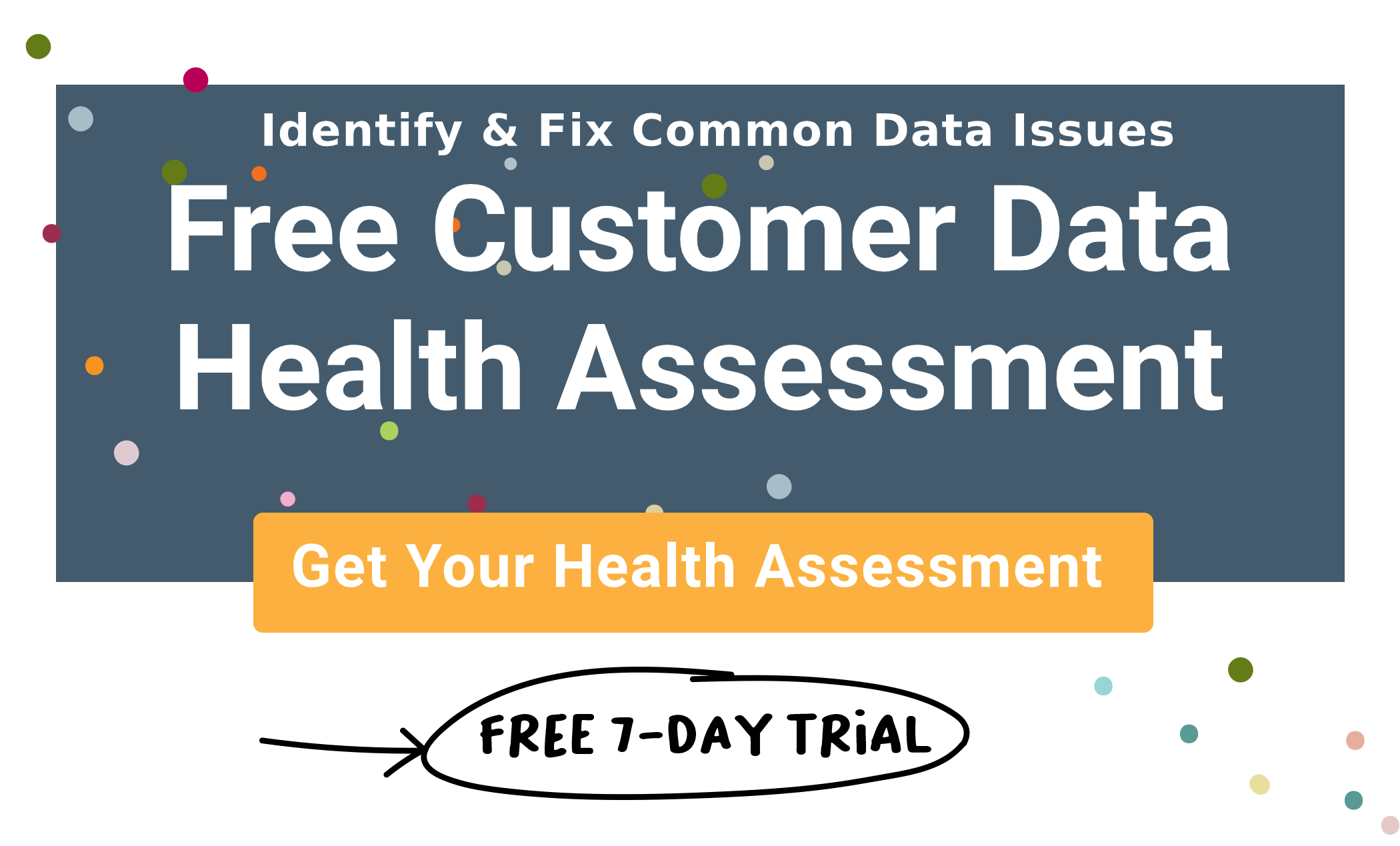Marketing operations professionals have become increasingly reliant on data in recent years. Customer data, employee data, internal process data, product data — it all plays a vital role in the larger marketing strategy that organizations employ. Each is used for data-backed decision making and the process of optimizing components of their operations.
Companies are collecting more data than ever and for good reason.
- According to a report from McKinsey, data-driven organizations are 23x more likely to acquire customers and 6x more likely to retain customers. This is one of the biggest marketing challenges.
- A 2018 survey of US decision-makers by Verndale found that data and analytics were the most important emerging technology for enhancing the customer experience.
- 92% of marketing professionals see personalization as a “crucial” element of the customer experience.
The ever-increasing amount of data that companies collect puts them in a position to deliver a better experience to each of their customers and simulate 1-on-1 experiences through marketing automation.
But the increased data collection comes with challenges of its own. As companies collect more data, tasks that used to be simple become more complex. Sending a newsletter broadcast out to your email list becomes increasingly risky to your brand reputation as your popularity grows. The stakes are raised. Data errors, irregularities, and improper formatting threaten to break the personalization veil and tarnish your brand in the eyes of interested prospects.
Let’s take a look at some of the most common challenges marketers face:
- Connecting Disconnected Platforms
- Maintaining a Single Customer View
- Avoiding Too Much Focus on Data Expansion
- Data Quality and Cleanliness
- Tracking the Right Data Quality Metrics
- Your Marketing Operations Data Swiss-Army Knife
1. Connecting Disconnected Platforms
In the last decade, we have seen an explosion in martech software availability. That explosion in new tech has led to some of the biggest marketing challenges.
It seems like every day there is a new tool launched to a shower of industry hype. That hype is present for good reason, too — the average company’s marketing tech stack today is several times more powerful than what the same company was likely using a decade ago.
What does this mean? Migration, and lots of it. Both in terms of companies moving to new platforms as well as migrating and syncing data between them.
This means that companies with a bit of history are likely to have several systems (some of them likely legacy systems) strung together with what amounts to digital duct tape and glue. Those old systems and platforms may have an array of scripts, processes, and custom development attached to them that make them too difficult for a company to realistically leave behind.
Now they’re faced with the problem of connecting those older platforms and systems to the shiny new platforms that they so desperately want to use.
Legacy systems aren’t likely to have integration with modern marketing systems like HubSpot and Salesforce. This means that companies that are often forced to exporting data in .CSV files and importing it into their new systems. This leads to a whole host of potential data problems, including:
- Duplicate data
- Incorrect data
- Improperly formatted data
- Reconciling data between systems
Then you are forced to try to rectify those issues. The problem? Even large platforms like Salesforce and HubSpot don’t have full operational data management functionality that allows you to identify and fix those issues in bulk.
Connecting non-integrated systems and those that do not integrate well enough is a marketing challenge for any modern company.
|
Related articles Four Phases of Customer Data Management Evolution Declutter Your CRM By Purging Low-Quality Data Automatically |
2. Maintaining a Single Customer View
This is a challenge that closely aligns with having disconnected platforms, and is one of the biggest marketing challenges. A single customer view provides marketing teams with the ability to accurately track a customer’s engagements with your brand across channels, departments, and platforms.
A single customer view allows marketing teams to provide a better experience to customers throughout their lifecycle. Marketing teams are able to directly address their pain points, deliver improved personalization, and anticipate education and content needs to guide your content marketing efforts. Sales teams have additional context that can re-shape their sales conversations. Customer support and success teams have a deeper understanding of the customers that they are working with and know what is important to them.
But with disconnected platforms, disjointed data sharing strategies, and a lack of investment in operational data management tools — maintaining a single customer view can be a huge marketing challenge, and one that impacts the marketing strategy that you can employ.
3. Avoiding Too Much Focus on Data Expansion
Data collection is growing, and fast. Marketing operations teams are always looking for an edge — a data point or tidbit that provides actionable insights that they can reliably take to the bank.
It makes sense that companies would focus on collecting more data. More data means more actionable insights, right? More profit?
Well, in theory. But it doesn’t always work out that way.
Often marketing operations teams place too much focus on collecting more data without putting enough thought into how they will audit, clean, and maintain that data. Without clean data, you can’t have faith in any of the actionable insights that you think you are deriving from your data source.
Collecting more data often just results in a laundry list of work that needs to be done before that data is usable, hamstringing your marketing efforts and slowing down your marketing teams. Even if you collect a lot of data and properly clean and format it — you still have to have systems in place for analyzing and putting that data to use.
The truth is that most companies would benefit from focusing more on using data and less on collecting it. The more precise their data collection, the more robust their marketing strategy can be. There is a good chance that there is a lot that they could learn from the data that they are already collecting that flies by them because they aren’t taking the time to look.
4. Data Quality and Cleanliness
Data quality and cleanliness is an ongoing marketing challenge for most companies. When you have prospect and customer data coming from many different sources — offline sources, lead lists, online forms, advertising campaigns, social media — you are certain to have data quality and consistency issues.
Your average marketing database is filled with low-quality records. Names, phone numbers, and addresses might be improperly formatted. You’ll have many duplicate contact records. Import and export errors might alter data, making some records unusable. Some data sources will contain unique fields that make a mess of your database.
Maintaining data quality is a never-ending battle. Companies have to invest in the right tools, yes, but they also have to invest in process development and employee training that to put themselves in a position to improve the quality of their customer and product data over time. Without those, the same problems will continue to arise.
Data cleanliness is one of the biggest marketing challenges for many organizations, hampering their digital marketing and lead generation efforts.
5. Tracking the Right Data Quality Metrics
Understanding the current quality level of your data is a huge challenge for marketing operations teams. Your average dataset can contain dozens of different types of errors. Different data input processes can result in different types of errors. Accounting for all of them is difficult. Being able to track and measure them is impossible without making it a big priority for your marketing department.
The types of metrics that you track should touch on these key areas:
- Data accuracy
- Data standardization & consistency
- Data completeness
- Data integrity
- Data timeliness
And here are some example metrics that marketing operations teams can use to track these key categories:
- Ratio of data to errors. The number of records with known errors compared to the dataset as a whole.
- Number of empty values. Number of fields in a data set with empty values.
- Data time-to-value. The amount of time between data collection and actually putting that data to use.
- Data storage costs. How much is it costing you to store your data? Is it going up? Remaining the same? How much more data are you collecting?
Choose metrics that make sense for your company and include the analysis of those metrics within your data audit procedures to face the biggest marketing challenges head on.
A Swiss-Army Knife For Your Marketing Data Challenges
Insycle is the perfect tool for helping marketing operations teams to take control of their customer data management and face the biggest marketing challenges head-on.
Insycle can help you with data auditing, cleaning, sharing, and monitoring. It’s a complete customer data management solution — watch the video to learn more about how Insycle can help marketing operations teams manage their data efficiently.






